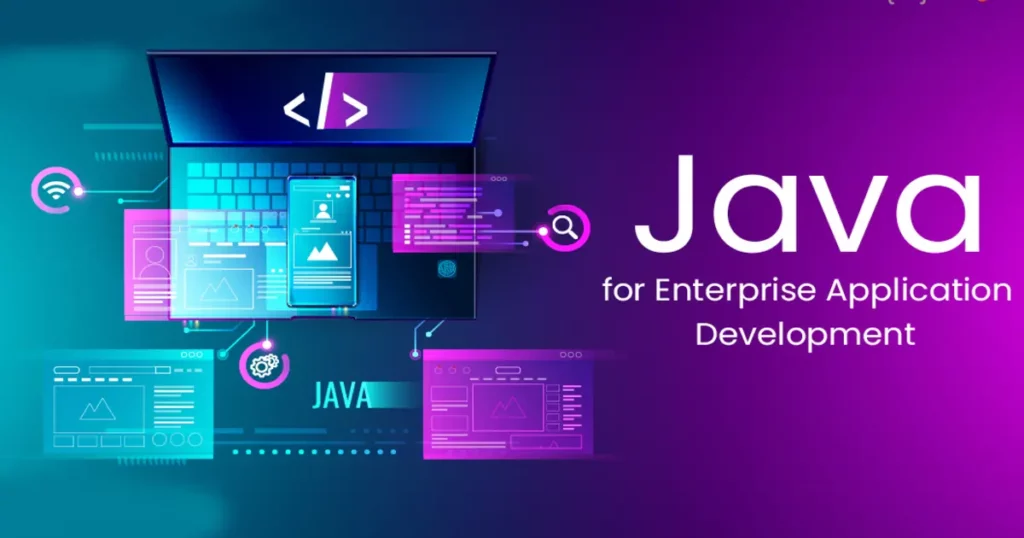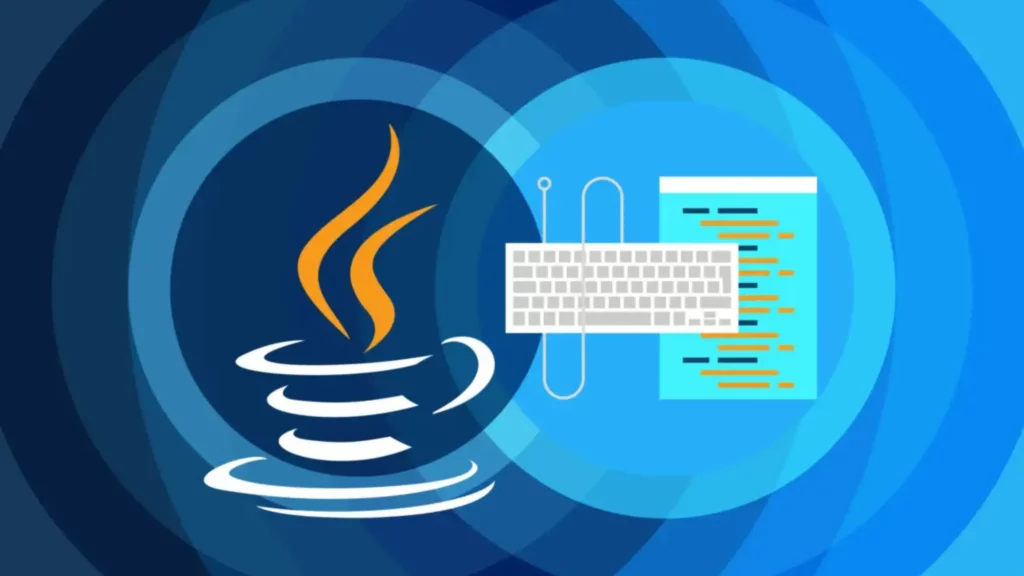Applications Develop in Java for Web, Desktop, and Mobile

Java is a programming language that you can use to make different kinds of applications. You can run Java applications on many devices, such as computers, phones, and smart cards. Java has many libraries, frameworks, and tools that help you Applications Develop in Java, desktop, mobile, and embedded systems.
Web Applications

Web applications are applications that you can use on the internet. You can access web applications with a web browser, such as Edge or Chrome. Web applications can do many things, such as shopping, socializing, learning, and playing games.
Some of the technologies and frameworks that you can use to make web applications with Java are:
Servlets and JSP:
These are the basic technologies for making web applications with Java. Servlets are Java classes that handle requests from web browsers and send back responses. JSPs are web pages that have Java code in them. You can use servlets and JSPs with other technologies, such as JavaBeans, custom tags, expression language, and JSF, to make more advanced web applications.
Spring:
This is a framework that helps you make web applications for businesses. Spring has many modules that help you with different tasks, such as managing dependencies, programming with aspects, accessing data, managing transactions, securing your application, testing your code, and making web pages. Spring also works well with other frameworks and libraries, such as Hibernate, Thymeleaf, Bootstrap, and Angular.
Struts:
This is another framework that helps you make web applications with Java. Struts follow the MVC pattern, which means that you separate your application into three parts: the model, the view, and the controller. The model is the part that deals with the data and the logic of your application. The view is the part that shows the user interface of your application. The controller is the part that controls the flow of your application. Struts also have many features, such as validating inputs, showing messages in different languages, handling errors, and adding plug-ins.
Desktop Applications

Desktop applications are applications that you can use on your computer or workstation. You can interact with desktop applications using your keyboard, mouse, or other devices. Desktop applications can do many things, such as writing documents, making spreadsheets, editing images, and playing games.
Some of the technologies and frameworks that you can use to make desktop applications with Java are:
Swing:
This is a toolkit that helps you make graphical user interfaces (GUIs) for desktop applications. Swing has many components that you can use to make windows, menus, buttons, tables, trees, dialogs, and other GUI elements. Swing also lets you do many things, such as handling events, arranging components, drawing graphics, making your application accessible, dragging and dropping items, and changing how your application looks.
JavaFX:
This is another toolkit that helps you make GUIs for desktop applications. JavaFX has many components that you can use to make rich and interactive desktop applications. JavaFX also lets you do many things, such as animating components, playing media files, integrating with web pages, making 3D graphics, styling your application with CSS, and binding data to components.
AWT:
This is a toolkit that helps you make basic GUIs for desktop applications. AWT uses native system libraries to make GUI elements. AWT also lets you do many things, such as handling events, drawing graphics, printing documents, and accessing the clipboard.
Mobile Applications

Applications that you can use on mobile devices, such as smartphones, tablets, and smartwatches, are referred to as mobile applications. Mobile applications can help you with many things, such as sending messages, finding directions, tracking your fitness, and managing your money. Some of the technologies and frameworks that you can use to make mobile applications with Java are:
Android:
This is an operating system for mobile devices that uses Java as its main programming language. Android has many libraries and tools that help you make mobile applications that can use various device features, such as sensors, cameras, GPS, Bluetooth, and Wi-Fi. Android also has a user interface framework that has many components, such as activities, fragments, views, layouts, and widgets.
Java ME:
This is a platform for making embedded and mobile applications that run on devices with limited resources, such as memory sizes below 10 MB and processor speeds below 32 MHz. Java ME has three layers: the configuration layer, which defines the basic features of the platform; the profile layer, which defines the specific features of the device type; and the optional package layer, which defines extra features for specific domains or functionalities. Java ME also has many APIs for using device capabilities, such as networking, persistence, security, and multimedia.
Embedded Systems
Embedded systems are systems that are made to do specific tasks within a larger system or environment. You can find embedded systems in many domains, such as cars, factories, hospitals, and home appliances. Embedded systems can perform specialized functions such as controlling, monitoring, communicating, and computing.
Some of the technologies and frameworks that you can use to make embedded systems with Java are:
Java SE Embedded:
This is a platform for making embedded systems that run on devices with moderate resources, such as memory sizes above 10 MB and processor speeds above 32 MHz. In addition to concurrency, reflection, generics, and annotations, Java SE Embedded is a large component of the Java SE platform as a whole. Additionally, there are numerous APIs in Java SE Embedded for using device functionalities like serial and parallel ports, GPIO pins, SPI, and I2C buses.
Java Card:
This is a platform for making embedded systems that run on devices with very limited resources, such as smart cards, SIM cards, and RFID tags. Java Card is a part of the Java ME platform that has many features, such as applets, transactions, firewalls, and cryptography. Java Card also has many APIs for using device functionalities, such as communication protocols, file systems, and biometrics.
If you want to know about current technologies let’s delve into this article.
Conclusion:
Java is a great programming language. You can use it to make many kinds of applications. For example, you can make web, desktop, mobile, or embedded applications with Java. Moreover, Java has the tools and frameworks to help you with that. Java applications are good because they have many advantages. They can run on different devices, work fast, stay safe, and grow bigger. However, Java applications are not easy to make. You need to learn a lot of things and deal with some problems. Therefore, you need to pick the right tools and techniques for your project. Additionally, you need to follow the best methods and patterns for making Java applications. This will help you use Java well and make good applications that you want and need.
FAQs:
What is Java?
Java is a programming language that you can use to make different kinds of applications. You can run Java applications on many devices, such as computers, phones, and smart cards.
What are the benefits of application development in Java?
Application development in Java has many benefits, such as portability, performance, security, and scalability. You can run Java applications on any device that supports the JVM, and they can run fast and safely and handle large amounts of data and users.
What are the challenges of application development in Java?
Application development in Java also has some challenges, such as complexity, compatibility, and a steep learning curve. You need to manage and maintain many components and dependencies, deal with different versions and platforms of the JVM, and learn a lot of knowledge and skills.
What are some of the technologies and frameworks for web application development in Java?
Some of the technologies and frameworks for web application development in Java are Servlets, JSP, Spring, and Struts. They help you handle requests and responses, manage dependencies and aspects, access data and transactions, secure and test your application, and make web pages.
What are some of the technologies and frameworks for desktop application development in Java?
Some of the technologies and frameworks for desktop application development in Java are Swing, JavaFX, and AWT. They help you make graphical user interfaces with windows, menus, buttons, and other elements. They also let you animate, play media, integrate with the web, make 3D graphics, style with CSS, and bind data.




